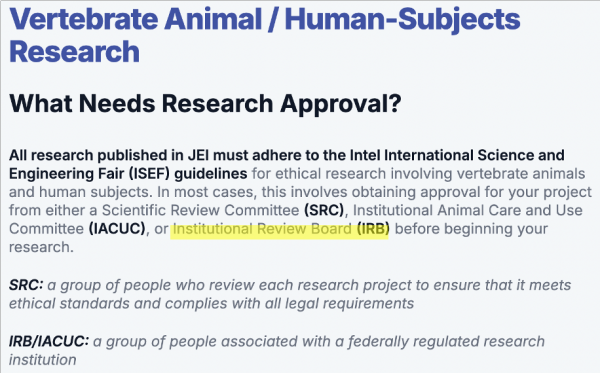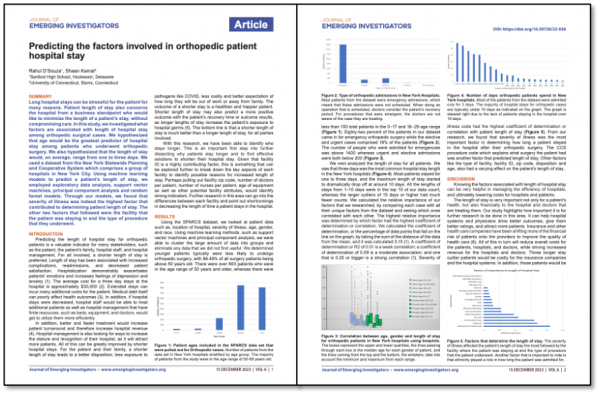|

To gain admission to prestigious medical schools, it's essential to build a strong narrative through extracurricular activities (ECs) by accumulating significant research experience alongside quantitative factors such as GPA. Students considering medical school should always pay attention to medical research. Today, we'll briefly explore methodologies in medical research and introduce the process that medical research involving human subjects must undergo (IRB), discussing what kind of medical research is feasible at the high school level.
Research Experience for Top Medical School Admissions
Types of Medical Research Papers 1. Original Research Papers
These are based on unique research, involving analysis and interpretation of data. The goal is to report innovative research findings. Researchers can plan and execute various concrete studies, such as experiments, surveys, interviews, and questionnaires, depending on their topic and field. Typical types include:
2. Clinical Research
Clinical research involves studies with human subjects to evaluate the effects of medical, surgical, or behavioral interventions. It aims to advance medical knowledge through direct patient interaction and trials.
3. Translational Research
Translational research bridges the gap between laboratory findings and clinical applications. It focuses on applying discoveries from basic science to develop new treatments, diagnostics, and preventive measures for diseases.
4. Review Papers
Review papers synthesize existing research literature to provide an overview of a specific field. They can be narrative reviews that summarize studies broadly, systematic reviews that follow a structured methodology, or meta-analyses that statistically combine results from multiple studies.
Process for Publishing Clinical Research Clinical research, involving human subjects, is highly scrutinized to ensure ethical standards. Researchers must receive formal approval to confirm adherence to research ethics, a requirement for academic recognition and publication in journals.

Journal of Emerging Investigators (JEI), a prominent high school journal, mandates strict adherence to regulations and approval for human/animal experimentation. This is where the Institutional Review Board (IRB) comes in.
What is IRB? The IRB is established to protect the rights and welfare of human research participants. It reviews all human-involved research under its institution’s jurisdiction, ensuring the welfare, rights, and privacy of participants before research begins. The IRB holds the authority to approve, exempt, reject, monitor, and require modifications to human-subject research. To ensure fairness and objectivity, the IRB is composed of over five members with diverse backgrounds, including at least one member unaffiliated with the institution and one non-scientist.
Approval Forms for IRB Submission 1. Researcher Information
Includes all researchers involved, designating one as the Principal Investigator (PI) responsible for the entire research project.
2. Detailed Research Design
Covers all details about the research, including participant activities, recruitment methods, study duration, compensation, inclusion/exclusion criteria, and any documents or recordings related to the study.
3. Special Protections
For vulnerable populations such as minorities, prisoners, and pregnant women, requiring consent forms and evidence of special protective measures.
4. Risk and Benefit Analysis
Informing participants of potential risks and demonstrating measures to mitigate them. Research must show substantial societal or individual benefits to be approved.
5. Privacy Protection
Ensuring data is used solely for research purposes, with measures like password protection, cloud software, and data encryption to prevent data breaches.
6. Informed Consent Forms
Clearly outlining the study’s purpose, potential benefits, and risks, ensuring voluntary participation and the freedom to withdraw.
7. Debrief Statements
Providing participants with sufficient information about the study upon completion, although not always mandatory by all IRBs.
Medical Research for High School Students While conducting research involving human subjects provides practical experience and can yield meaningful results, high school students often face challenges in securing enough participants and navigating the IRB approval process, making it time-consuming and costly. Thus, high school students frequently turn to Secondary Research, utilizing public data to conduct their studies. Secondary research involves using existing data from sources like peer-reviewed papers, meta-analyses, and government or private sector databases.
Example of High School-Level Medical Research A notable example published in JEI utilized public data from the New York Statewide Planning and Cooperative System (SPARCS) to predict variables affecting the hospital stay duration of orthopedic patients, demonstrating the meaningful results that can be achieved through secondary research.

By understanding and effectively navigating these processes, high school students can significantly enhance their research experience, making their ECs more compelling and competitive for top medical school admissions.
Types of Medical Research 1. Basic Science Research
Concept: Traditional research conducted in laboratory settings, often referred to as 'bench research.' Example: Investigating the cellular pathways of a specific tumor suppressor gene or the impact of gut bacteria on protein folding.
2. Clinical Research
Concept: Studies involving human subjects to test the safety and efficacy of diagnostic products, drugs, and medical devices. Example: Clinical trials for new COVID-19 treatments.
3. Public Health Research
Concept: Research aimed at improving the health of communities and populations. Example: Studying the impact of health insurance status and locality on heart attack mortality rates or the effects of wildfire smoke on health.
4. Health Public Policy Research
Concept: Investigating the impact of laws, regulations, and policies on population health. Example: Assessing the effectiveness of a nutrition program in the Philippines or researching the U.S. health insurance market.
5. Narrative Medicine Research
Concept: Collecting stories from patients and their families to understand their experiences with disease onset and recovery. Example: Interviewing Asian patients about their attitudes towards traditional medicine in cancer treatment or understanding family decision-making processes for patients on long-term ventilation.
6. Artificial Intelligence Research
Concept: Utilizing computer science techniques to analyze vast amounts of data for medical discoveries. Example: Developing AI programs to detect pneumonia in chest X-rays or algorithms to better capture abnormal heart rhythms in EKGs. |
 Click here to book
Click here to book